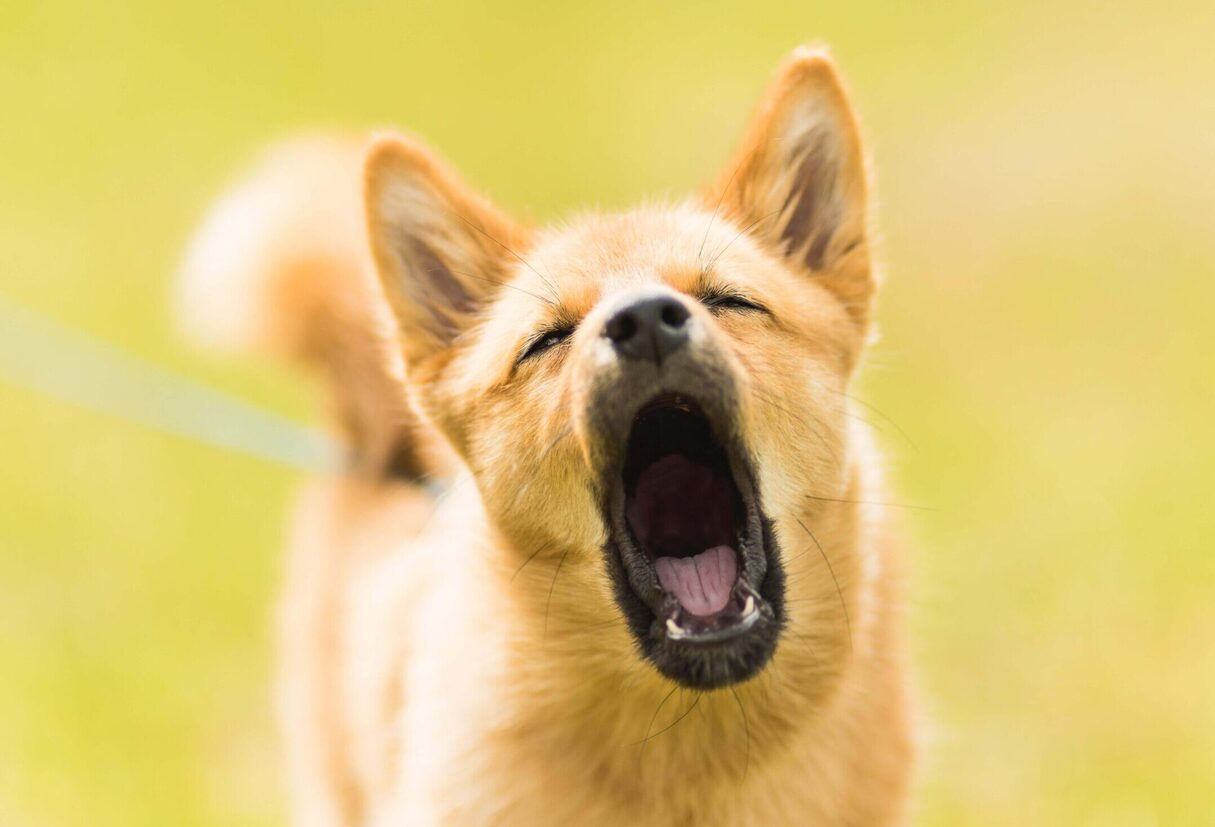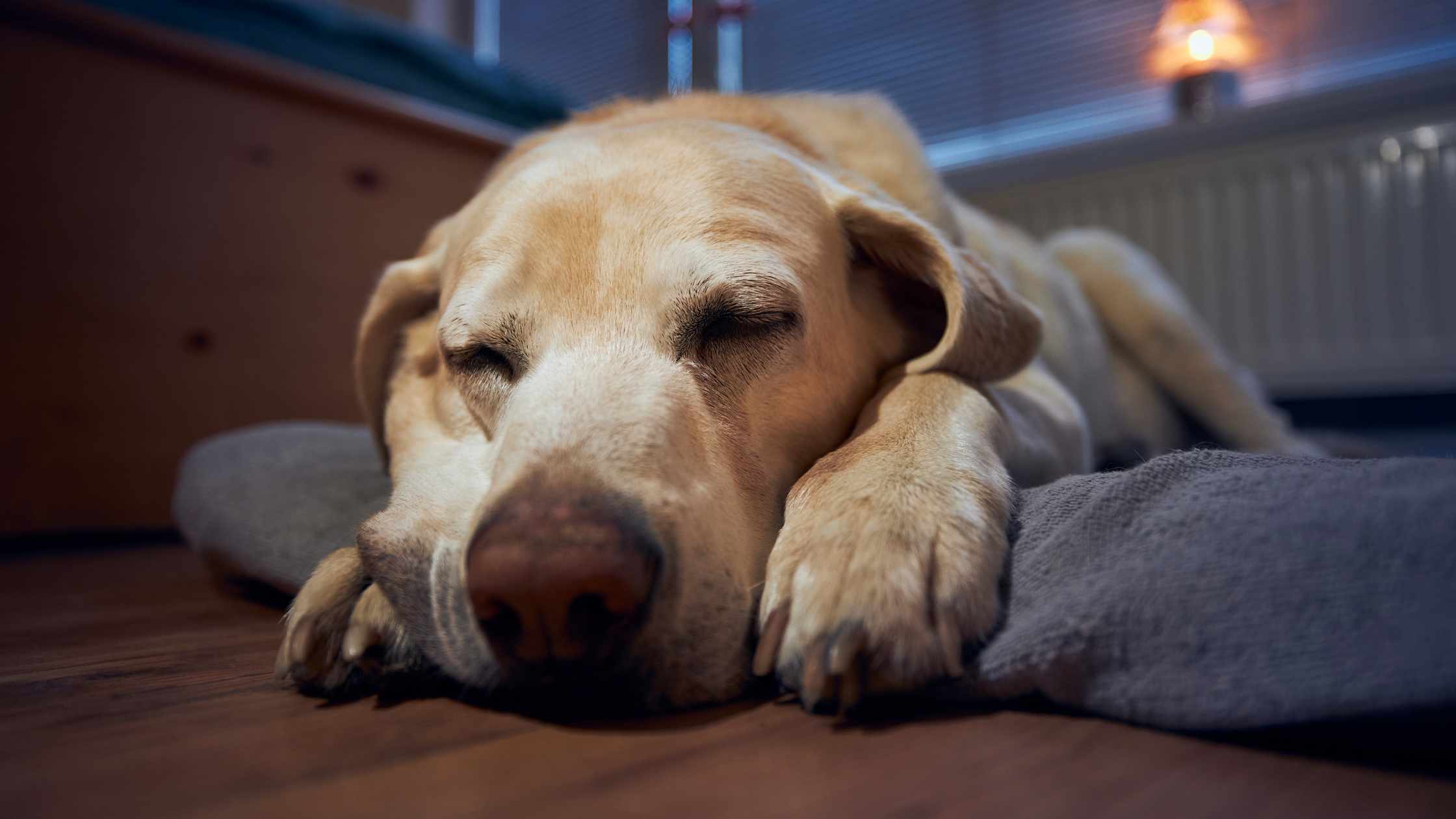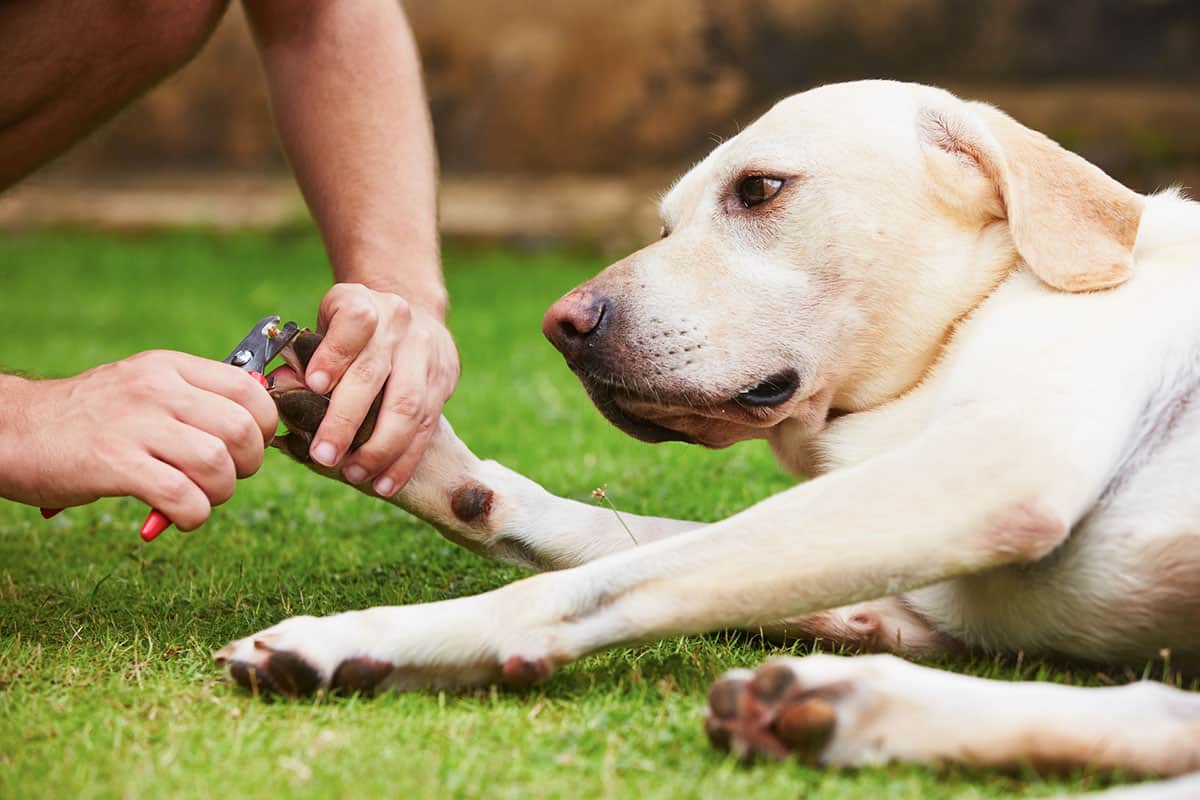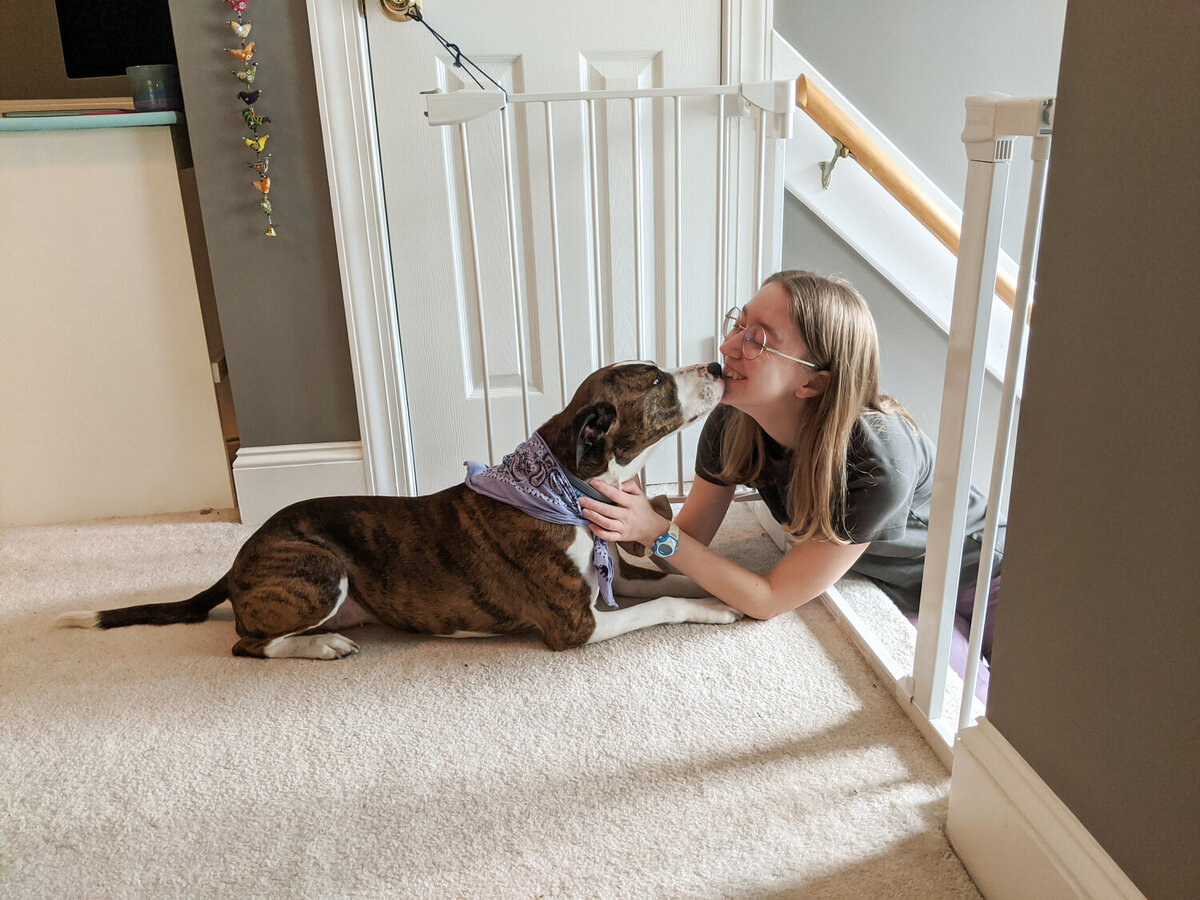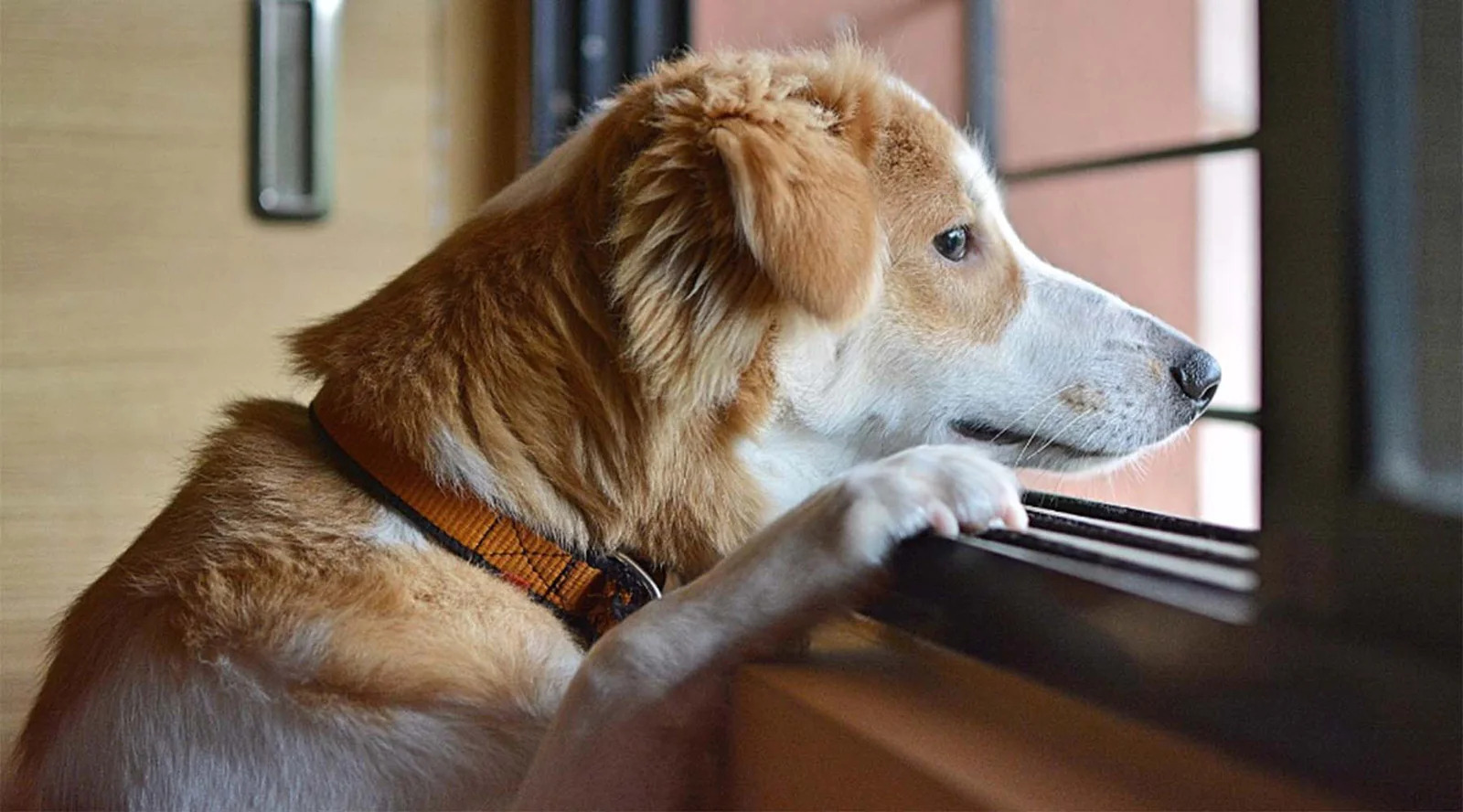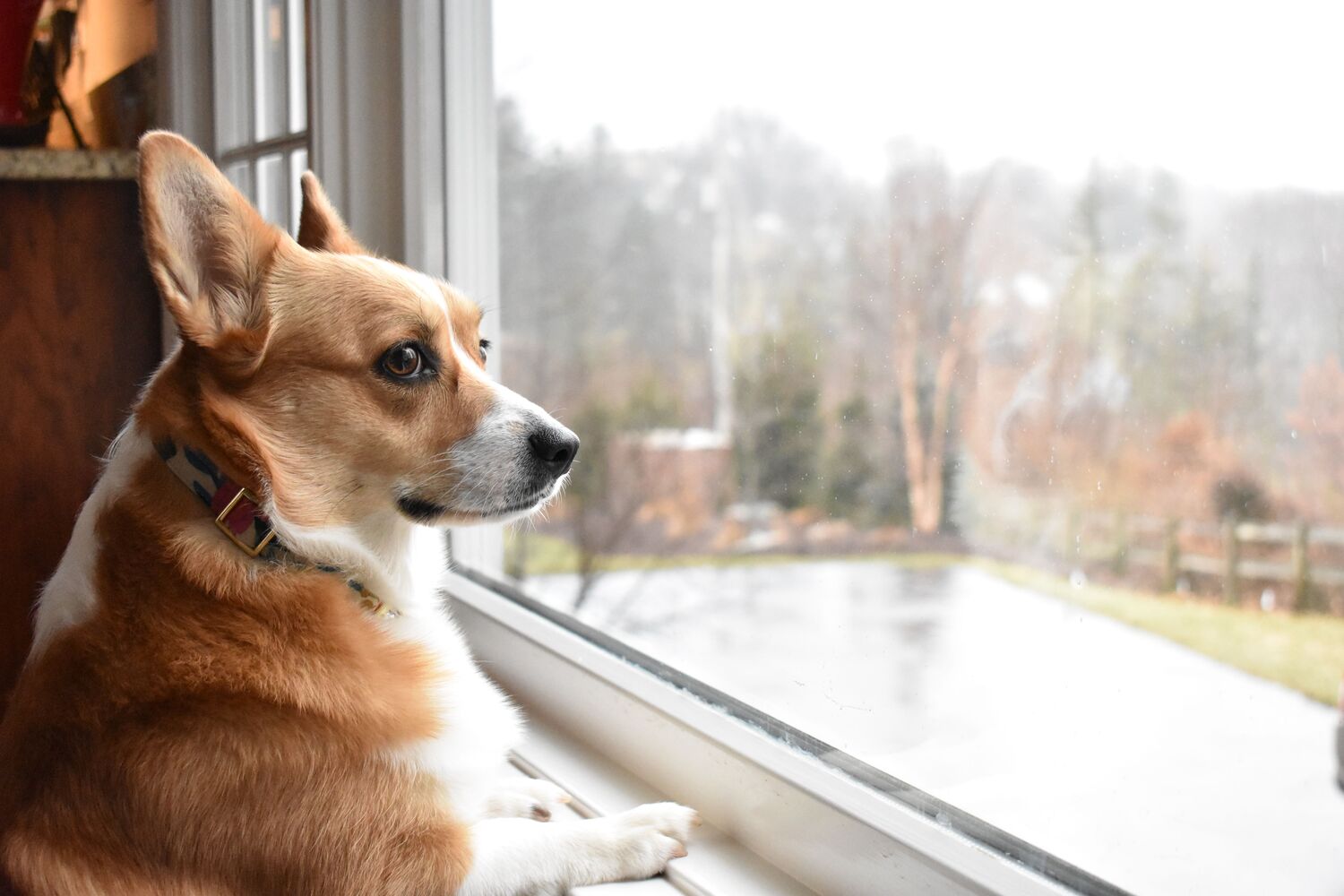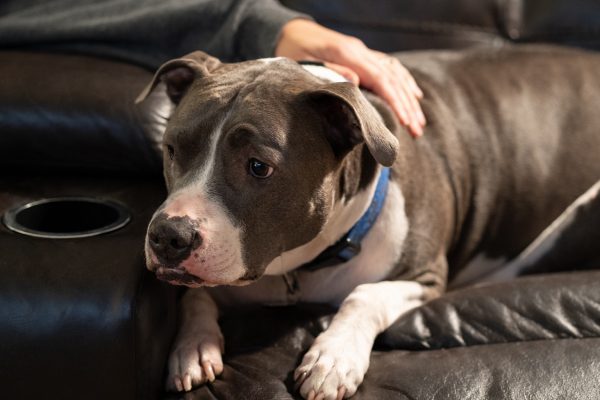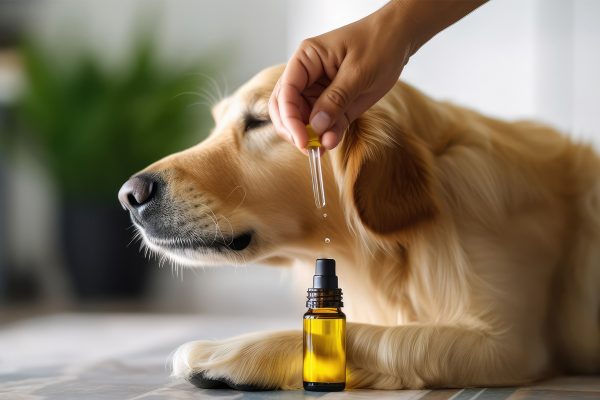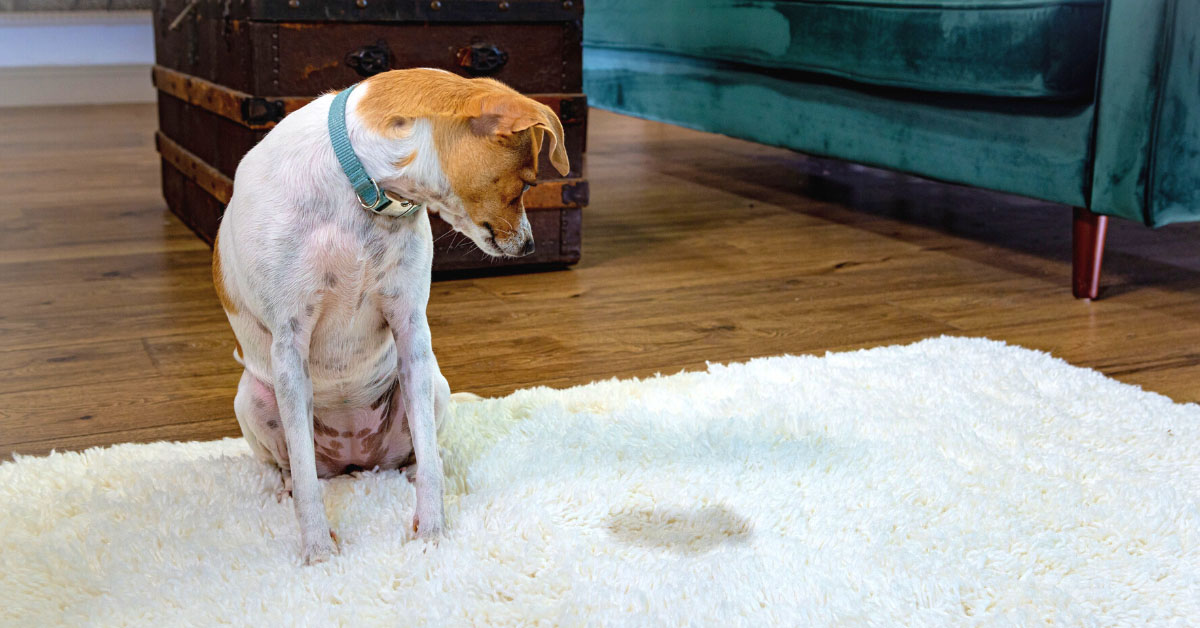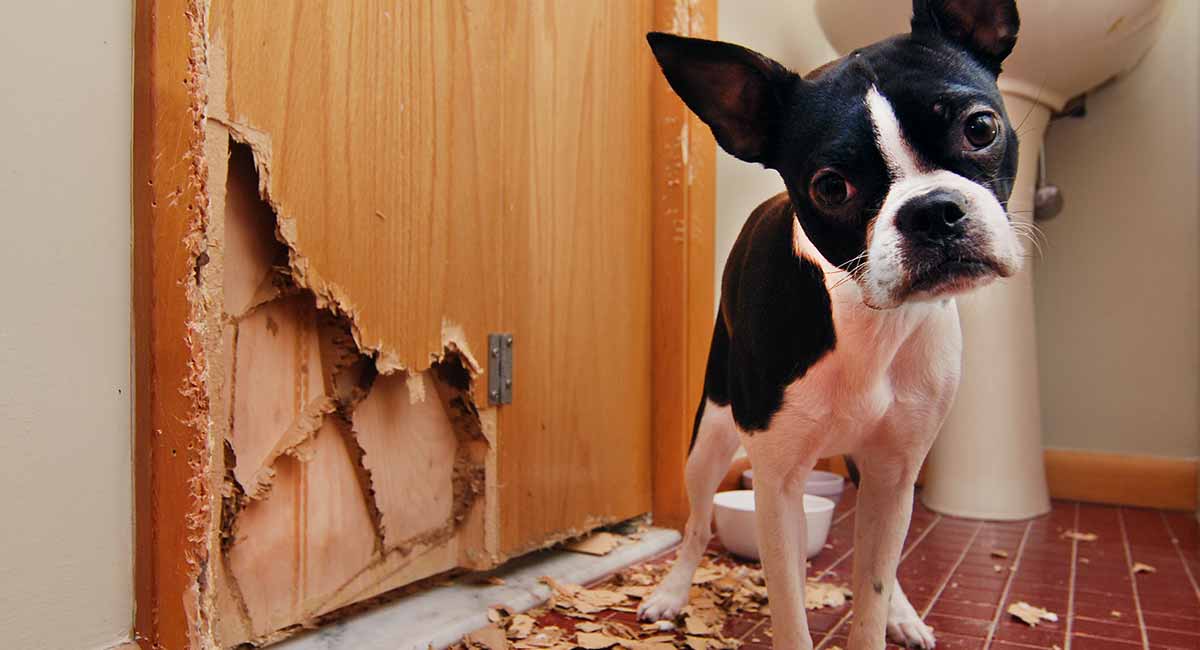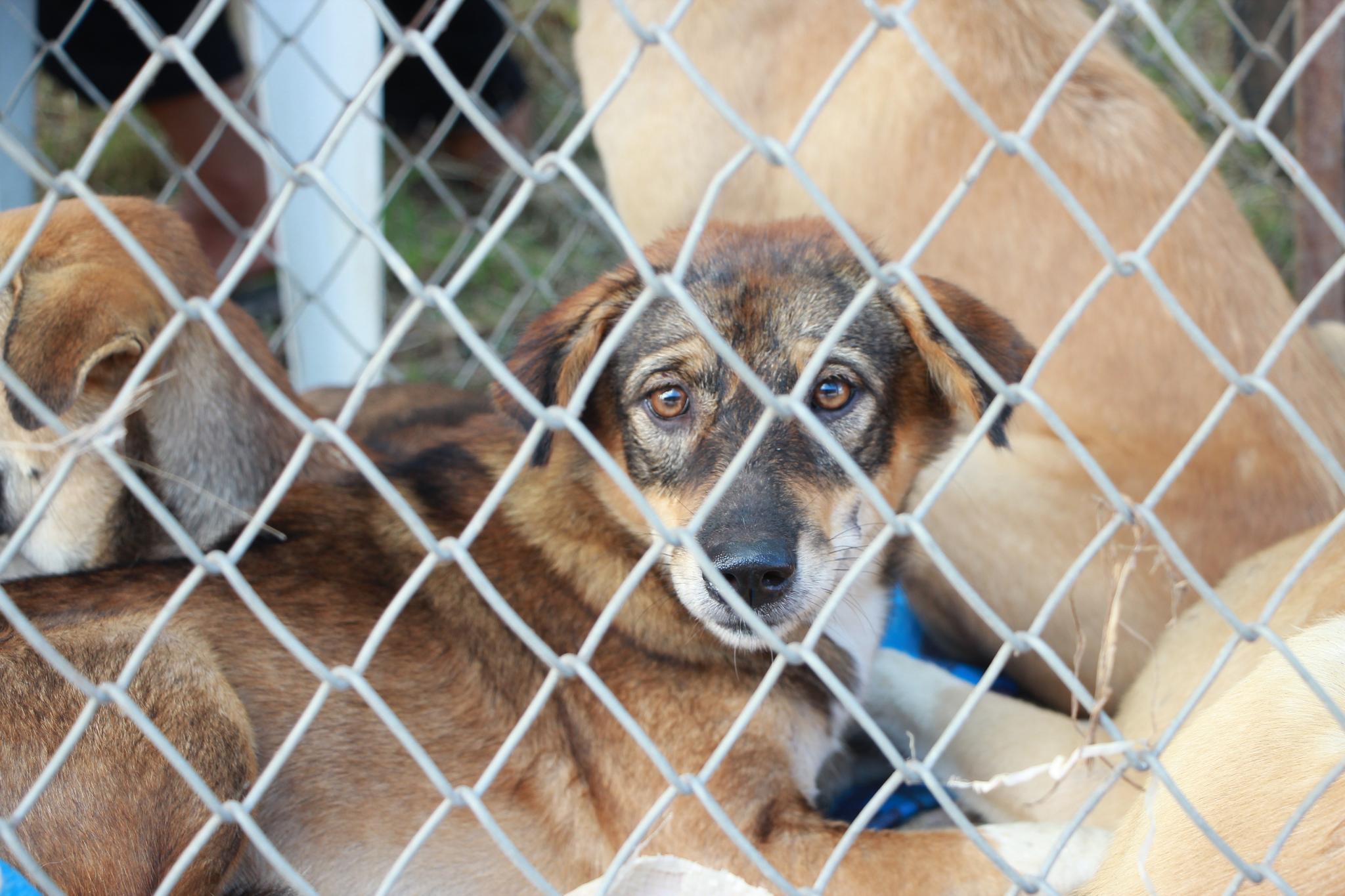Home>Health & Wellness>Behavior & Cognitive Care>How To Deal With An Old Dog With Separation Anxiety
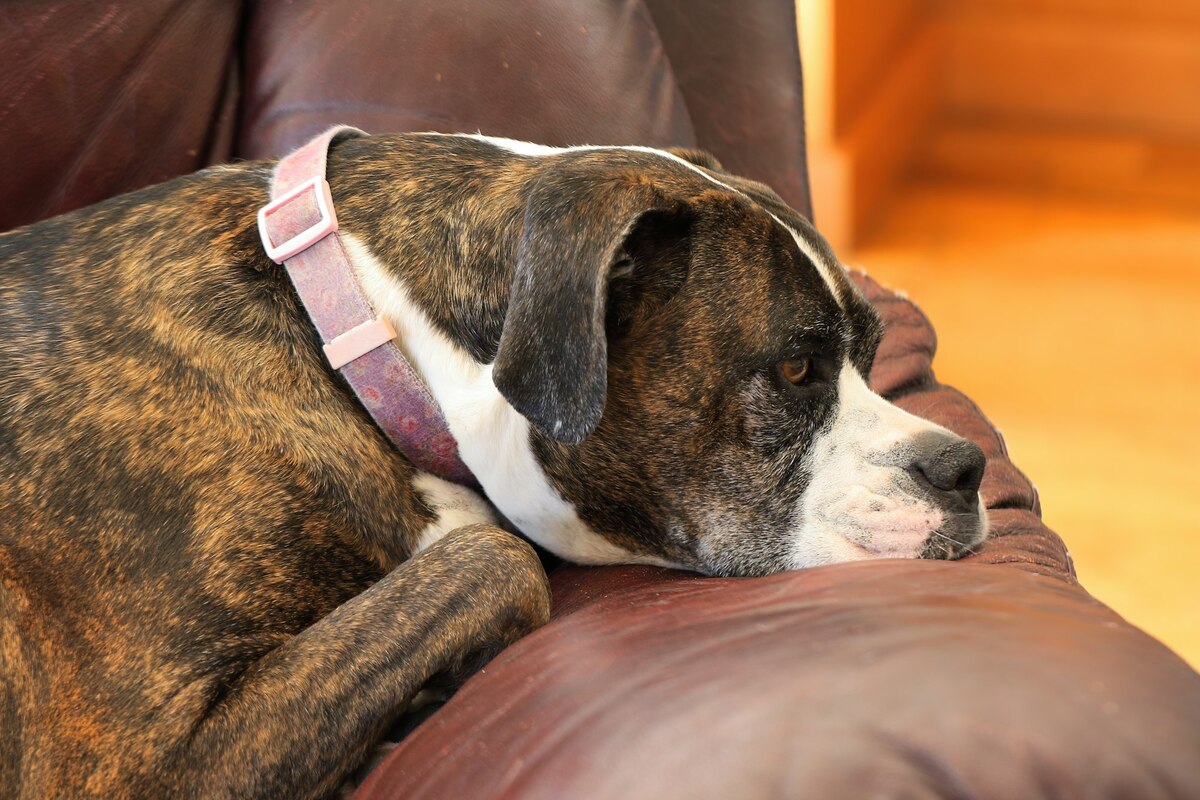

Behavior & Cognitive Care
How To Deal With An Old Dog With Separation Anxiety
Published: January 29, 2024
Learn effective strategies for managing separation anxiety in older dogs. Get expert tips on behavior and cognitive care to help your senior pup feel more secure and calm.
(Many of the links in this article redirect to a specific reviewed product. Your purchase of these products through affiliate links helps to generate commission for Pawsomeoldies.com, at no extra cost. Learn more)
Table of Contents
Understanding Separation Anxiety in Older Dogs
Separation anxiety is not limited to humans; older dogs can also experience this distressing condition. It occurs when a dog becomes anxious or stressed when separated from their owner or when left alone. This can be particularly challenging for older dogs, as they may have developed a strong bond with their owners over the years. Understanding the underlying causes and symptoms of separation anxiety in older dogs is crucial in providing them with the care and support they need.
Older dogs may develop separation anxiety due to various reasons, including changes in their routine, environment, or the loss of a companion. Additionally, age-related cognitive decline can contribute to their anxiety when left alone. It's essential to recognize the signs of separation anxiety in older dogs, as they may exhibit different behaviors compared to younger dogs.
Common signs of separation anxiety in older dogs may include excessive barking or howling when left alone, destructive behavior such as chewing furniture or scratching doors, and inappropriate elimination indoors. Some older dogs may also display physical symptoms of distress, such as pacing, panting, or drooling excessively when their owner is about to leave. These behaviors can be distressing for both the dog and the owner, highlighting the importance of addressing separation anxiety in older dogs with empathy and understanding.
By understanding the emotional and behavioral challenges faced by older dogs with separation anxiety, owners can take proactive steps to alleviate their distress and improve their overall well-being. Recognizing the unique needs of older dogs and acknowledging the impact of aging on their mental and emotional state is essential in providing them with the support and comfort they require.
Understanding the complexities of separation anxiety in older dogs enables owners to approach the issue with patience and compassion, fostering a deeper bond and sense of security for their beloved canine companions.
Recognizing the Signs of Separation Anxiety in Older Dogs
Recognizing the signs of separation anxiety in older dogs is crucial for identifying and addressing their distress. While some symptoms may overlap with those exhibited by younger dogs, older dogs may display unique behaviors that indicate their struggle with being left alone. Understanding these signs can help owners provide the necessary support and intervention to alleviate their dog's anxiety and improve their overall well-being.
One common sign of separation anxiety in older dogs is excessive vocalization when left alone. This may manifest as persistent barking, howling, or whining, often occurring shortly after the owner's departure. Unlike normal barking, which may be triggered by external stimuli, such as the presence of strangers or other animals, the vocalization associated with separation anxiety tends to be more intense and prolonged, reflecting the dog's distress at being separated from their owner.
Destructive behavior is another telltale sign of separation anxiety in older dogs. This may involve chewing on furniture, doors, or personal belongings, as well as scratching at windows or doors in an attempt to escape or reunite with their owner. Such behavior is not driven by a desire to misbehave but rather stems from the dog's overwhelming anxiety and panic in response to being left alone.
Inappropriate elimination indoors can also indicate separation anxiety in older dogs. Accidents such as urinating or defecating inside the house, despite being housetrained, may occur when the dog experiences extreme distress due to separation from their owner. This behavior is a manifestation of their emotional turmoil and should not be mistaken for a lack of training or disobedience.
Furthermore, older dogs with separation anxiety may exhibit physical symptoms of distress, such as pacing, panting, or drooling excessively when they sense that their owner is about to leave. These outward signs of agitation and unease reflect the internal turmoil experienced by the dog when confronted with the prospect of being alone.
It is important for owners to observe their older dogs for these signs of separation anxiety, as early recognition can lead to timely intervention and support. By acknowledging and understanding these behaviors, owners can take proactive steps to address their dog's anxiety and create a more secure and comforting environment for them, thereby enhancing their quality of life during periods of separation.
Tips for Managing Separation Anxiety in Older Dogs
Understanding how to effectively manage separation anxiety in older dogs is essential for promoting their emotional well-being and overall quality of life. While addressing this condition may present challenges, implementing the following tips can significantly alleviate the distress experienced by older dogs when left alone.
-
Gradual Departures and Reunions: Practice gradual departures and reunions to desensitize your older dog to your absence. Start by leaving for short periods and gradually extend the duration over time. This approach helps the dog learn that departures are not permanent and that you will return, reducing their anxiety.
-
Create a Safe Space: Designate a comfortable and secure area for your older dog to retreat to when you are not around. This space can be equipped with familiar bedding, toys, and comforting items that provide a sense of security and reassurance.
-
Engage in Enrichment Activities: Engage your older dog in mentally stimulating activities, such as puzzle toys or interactive games, to keep their mind occupied and alleviate anxiety during periods of separation. Mental stimulation can help redirect their focus and reduce distress.
-
Establish a Consistent Routine: Maintain a consistent daily routine for your older dog, including regular feeding times, exercise, and play. Predictability and structure can help alleviate anxiety by providing a sense of stability and security.
-
Desensitization Training: Gradually expose your older dog to pre-departure cues, such as picking up keys or putting on a coat, without actually leaving. This helps diminish the association between these cues and your departure, reducing the dog's anxiety response.
-
Calming Remedies: Consider using natural calming remedies, such as pheromone diffusers or calming supplements, to help soothe your older dog's anxiety. These products can promote relaxation and reduce stress levels, contributing to a more tranquil state of mind.
-
Seek Professional Guidance: Consult with a veterinarian or a certified animal behaviorist to develop a tailored behavior modification plan for your older dog. Professional guidance can provide valuable insights and personalized strategies to address your dog's specific needs.
By implementing these tips, owners can effectively manage separation anxiety in older dogs, fostering a supportive and comforting environment that promotes emotional well-being and reduces distress during periods of separation. Each dog is unique, so it's important to approach these strategies with patience, empathy, and a deep understanding of your older dog's individual needs.
Creating a Comfortable Environment for an Older Dog with Separation Anxiety
Creating a comfortable environment for an older dog with separation anxiety is paramount in alleviating their distress and promoting a sense of security during periods of solitude. By implementing specific strategies and adjustments within the home environment, owners can significantly enhance their older dog's well-being and mitigate the impact of separation anxiety.
One fundamental aspect of creating a comforting environment for an older dog with separation anxiety is to establish a designated safe space within the home. This area should be secluded, quiet, and equipped with familiar items that provide a sense of comfort and security for the dog. Placing their favorite bedding, toys, and blankets in this space can help create a reassuring and familiar environment, serving as a retreat where the dog can seek solace when feeling anxious or distressed.
In addition to a designated safe space, the overall home environment should be enriched with elements that promote relaxation and mental stimulation. Calming scents, such as lavender or chamomile, can be diffused in the environment to create a soothing atmosphere. Soft background music or white noise can also help mask external sounds and create a tranquil ambiance, reducing the dog's stress levels during periods of separation.
Furthermore, ensuring that the home environment is enriched with engaging and mentally stimulating activities can help alleviate the older dog's anxiety. Interactive puzzle toys, treat-dispensing devices, and engaging games can divert the dog's attention and provide mental stimulation, thereby reducing their distress during periods of solitude. These activities not only serve as a source of entertainment but also contribute to the dog's overall well-being by keeping their mind occupied and engaged.
Another crucial aspect of creating a comfortable environment for an older dog with separation anxiety is to maintain a consistent and predictable routine. Establishing regular feeding times, exercise sessions, and playtime helps provide structure and stability, which can significantly reduce the dog's anxiety. Predictability and routine create a sense of security for the dog, reassuring them that their needs will be consistently met, even during periods of separation.
By implementing these strategies and adjustments within the home environment, owners can create a comforting and supportive space for their older dog, effectively mitigating the impact of separation anxiety. This proactive approach not only promotes the dog's emotional well-being but also strengthens the bond between the dog and their owner, fostering a sense of security and reassurance for the older dog during times of solitude.
Seeking Professional Help for an Older Dog with Separation Anxiety
Seeking professional help for an older dog experiencing separation anxiety is a proactive and compassionate step toward addressing their emotional distress and improving their overall well-being. While owners play a crucial role in providing support and implementing management strategies, the expertise of veterinarians and certified animal behaviorists can offer valuable insights and tailored interventions to effectively address the specific needs of older dogs with separation anxiety.
Veterinarians specializing in behavior medicine possess the knowledge and expertise to conduct a comprehensive assessment of an older dog's behavioral and emotional challenges. Through a thorough evaluation, including a review of the dog's medical history and behavioral patterns, veterinarians can identify any underlying health issues or age-related factors that may contribute to the development or exacerbation of separation anxiety. Additionally, they can offer guidance on potential medical interventions or treatments that may alleviate the dog's anxiety, such as natural calming supplements or medications that promote relaxation without causing sedation.
Certified animal behaviorists are skilled in understanding the intricate dynamics of canine behavior and emotions, enabling them to develop personalized behavior modification plans tailored to an older dog's specific needs. By observing the dog's responses to various stimuli and assessing their environment, behaviorists can identify triggers that exacerbate separation anxiety and recommend targeted interventions to address these triggers effectively. They can also provide guidance on implementing desensitization and counterconditioning techniques, which gradually acclimate the older dog to periods of separation and modify their emotional response to being alone.
In some cases, professional behavior modification programs or training sessions may be recommended to support older dogs with severe separation anxiety. These programs are designed to address the underlying emotional distress and promote positive behavioral changes through structured and consistent interventions. Additionally, behaviorists can offer valuable advice on creating a supportive home environment that caters to the older dog's emotional needs, including recommendations for enrichment activities, environmental adjustments, and management strategies that promote a sense of security and comfort during periods of separation.
By seeking professional help, owners demonstrate a commitment to understanding and addressing their older dog's separation anxiety with the highest level of care and expertise. The collaborative efforts of veterinarians and certified animal behaviorists can significantly enhance the well-being of older dogs, empowering them to overcome their distress and enjoy a more tranquil and fulfilling life, even when faced with periods of solitude.
